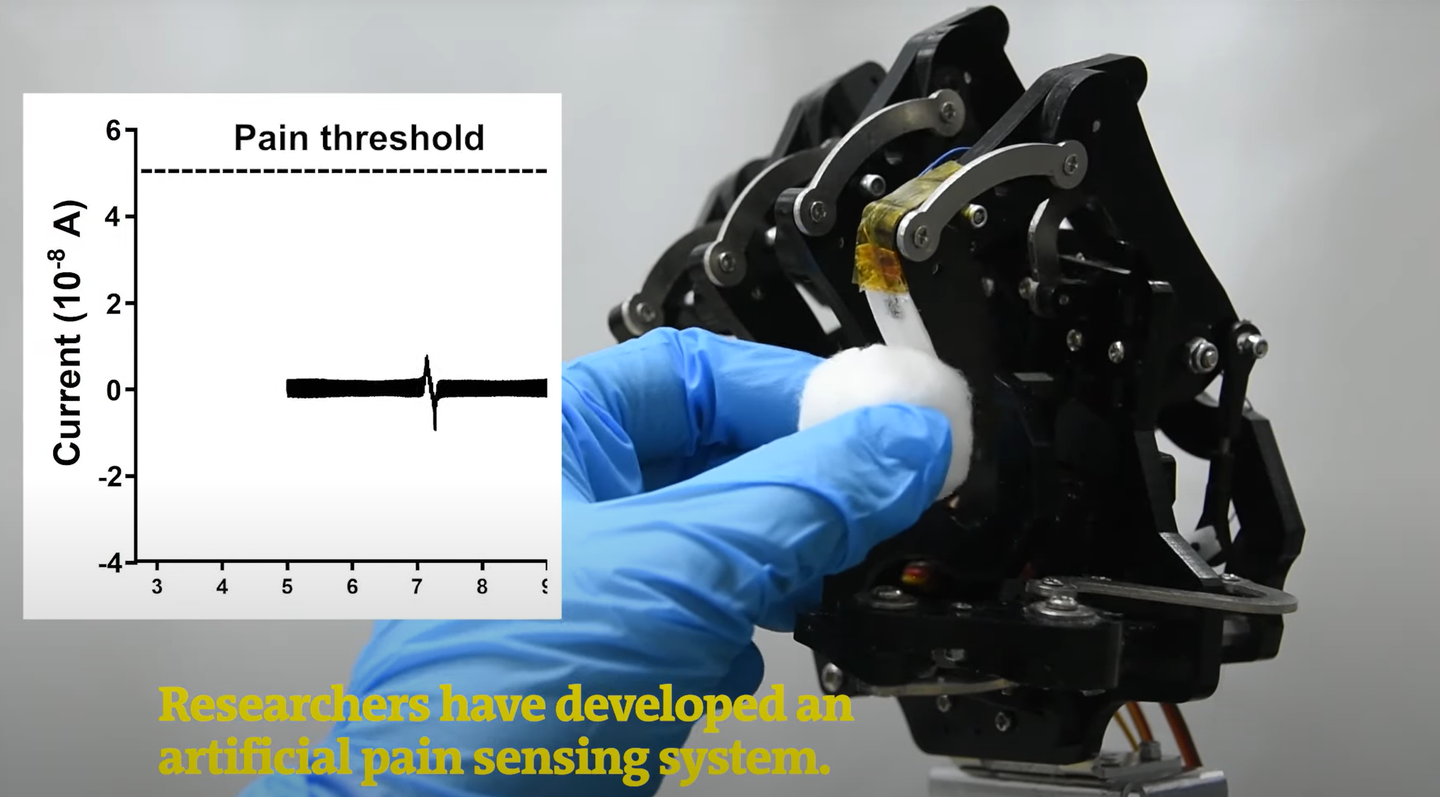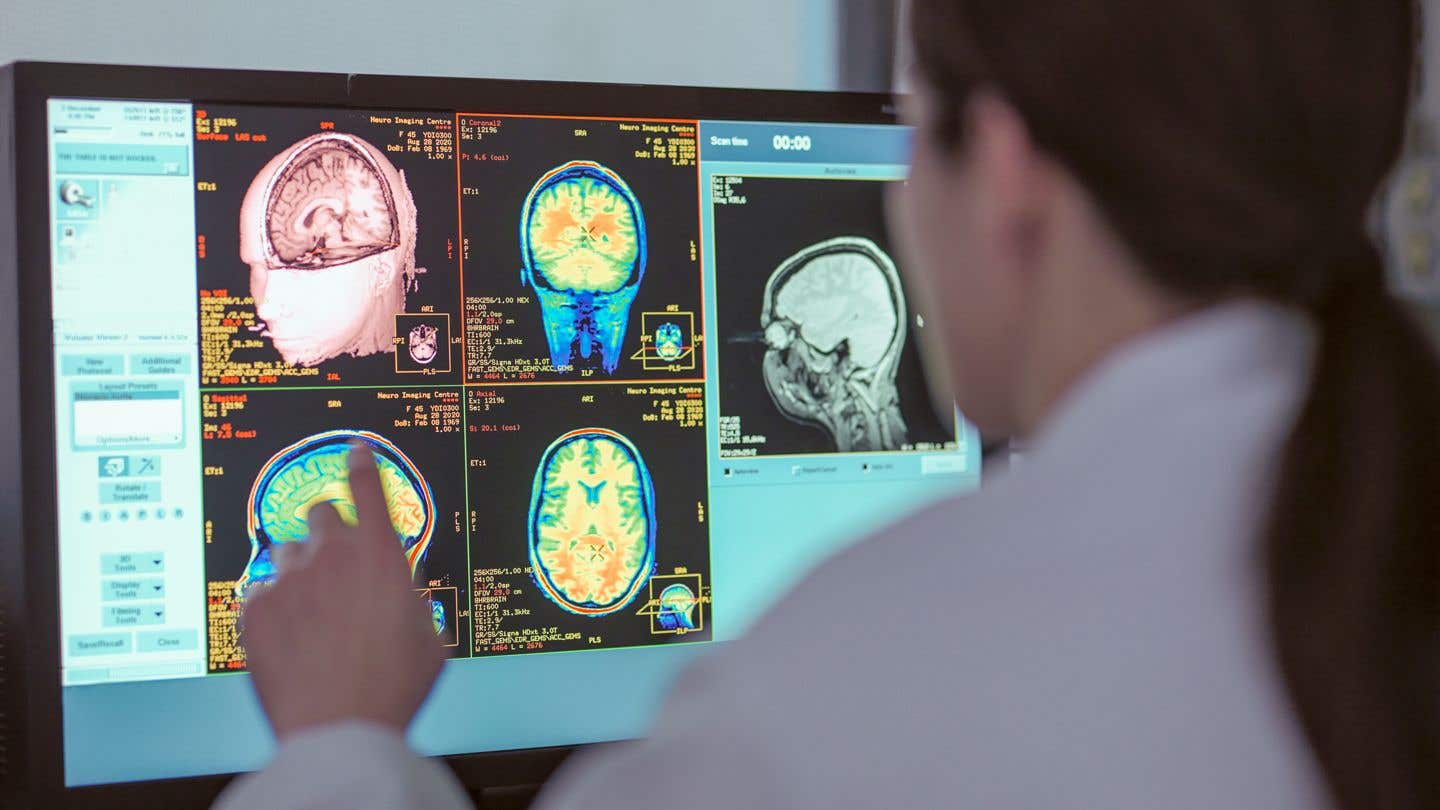Cutting-edge synthetic skin and a new specialized AI enables robots to sense pain
This groundbreaking development promises to revolutionize the field of robotics and has far-reaching implications for various applications.

[Dec. 31, 2023: JD Shavit, The Brighter Side of News]
Cutting-edge synthetic skin integrated with an advanced artificial intelligence (AI) algorithm, paving the way for robots to sense pain and respond to danger. (CREDIT: Hunan University)
In a remarkable breakthrough, scientists from Hunan University in China have unveiled cutting-edge synthetic skin integrated with an advanced artificial intelligence (AI) algorithm, paving the way for robots to sense pain and respond to danger.
This groundbreaking development promises to revolutionize the field of robotics and has far-reaching implications for various applications.
Understanding How Humans Feel Pain
Before delving into the fascinating world of synthetic skin and AI, it is essential to grasp how humans experience pain. The sensation of pain in humans originates from a complex interplay between peripheral nerve signals and their interpretation by the brain.
Related Stories
Pain sensors, scientifically known as nociceptors, are present in human skin. These nociceptors transmit electrical impulses along nerves to specific regions of the brain, triggering the body's self-preservation mechanisms. This can manifest as reflexes, such as instinctively pulling one's hand away from a heat source or a sharp object.
At the heart of this groundbreaking invention lies a novel pain-probing system that replicates the principles of human pain perception. The synthetic skin developed by the Chinese researchers operates through the synergistic interaction of zinc crystals and helium gel.
Remarkably, these zinc crystals respond to excessive force by emitting electrons, which generate an electric signal and a flash of light. This distinctive response serves to precisely pinpoint the location where the robot experiences pain.
One of the key figures behind this remarkable creation, scientist Jie Tan, emphasizes that the introduction of artificial skin into robotics will empower robots to detect and respond to potentially hazardous situations. To enable this invention to function seamlessly, the researchers designed a specialized AI algorithm. This algorithm plays a crucial role in helping the robot discern which stimuli should be avoided.
Tan believes that the use of both electrical and optical signals enables the robot to simultaneously perceive the intensity and location of pain. This closely mirrors the functionality of a natural nociceptor, the pain-sensing mechanism found in humans.
To test and train the system, scientists exposed it to around 100 electrical and optical indicators.
The system of crystals created by scientists (CREDIT: youtube.com/New Scientist)
They used various objects like knives, sticks, and cotton balls pressed against the sensor to mimic different stimuli. Through this training process, the algorithm learned to distinguish between potentially harmful and harmless objects, even when they produced similar sensor readings.
Promising Results and Future Applications
The research findings are nothing short of astounding. The robotized hand equipped with this innovative synthetic skin successfully distinguished between safe and unsafe objects in a staggering 97.5% of cases.
For instance, the artificial intelligence system quickly recognized that the robotic arm could securely hold a boiled egg, but it swiftly rejected a ball adorned with iron spikes. These results highlight the potential for this technology to enhance the safety and capabilities of robots in various industries.
Beyond robotic applications, scientists have also discovered a novel use for synthetic skin. They affixed patches of it to a rat's heart, liver, and lungs, allowing a surgical robot to perform biopsies—collecting tissue samples for subsequent microscopic analysis. During these procedures, the skin provided real-time feedback to the robot, guiding its movements to prevent damage to vital organs.
These remarkable breakthroughs suggest a future where synthetic skin could be embedded in surgical instruments, enabling doctors to perform delicate procedures remotely with a heightened sense of touch. Such innovations hold the promise of revolutionizing not only robotics but also the field of medicine, opening up new possibilities for minimally invasive surgery and telemedicine.
This pioneering technology not only allows robots to sense and react to pain but also promises safer and more precise medical procedures, heralding a new era of innovation and advancement in these fields. The potential applications seem boundless, and the impact on various industries is sure to be profound.
For more science and technology news stories check out our New Innovations section at The Brighter Side of News.
Note: Materials provided above by The Brighter Side of News. Content may be edited for style and length.
Like these kind of feel good stories? Get the Brighter Side of News' newsletter.
Joshua Shavit
Science & Technology Writer | AI and Robotics Reporter
Joshua Shavit is a Los Angeles-based science and technology writer with a passion for exploring the breakthroughs shaping the future. As a contributor to The Brighter Side of News, he focuses on positive and transformative advancements in AI, technology, physics, engineering, robotics and space science. Joshua is currently working towards a Bachelor of Science in Business Administration at the University of California, Berkeley. He combines his academic background with a talent for storytelling, making complex scientific discoveries engaging and accessible. His work highlights the innovators behind the ideas, bringing readers closer to the people driving progress.



